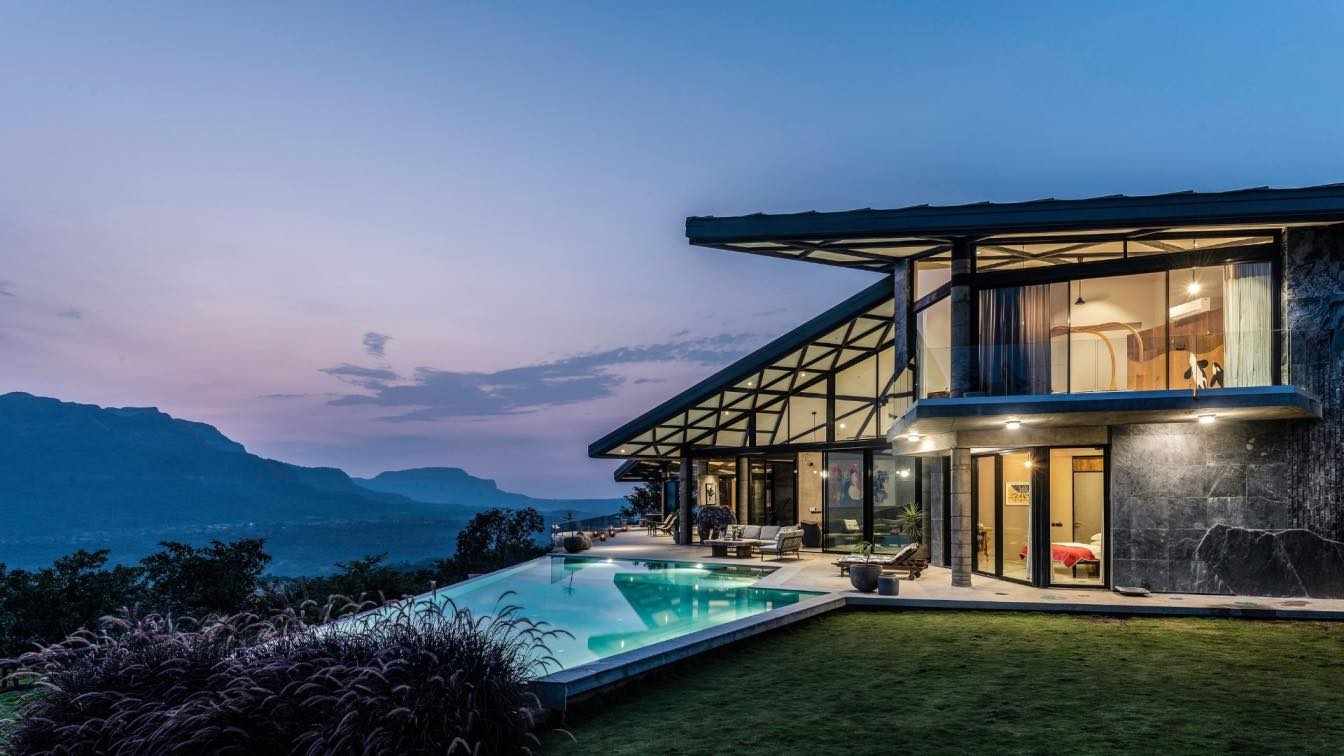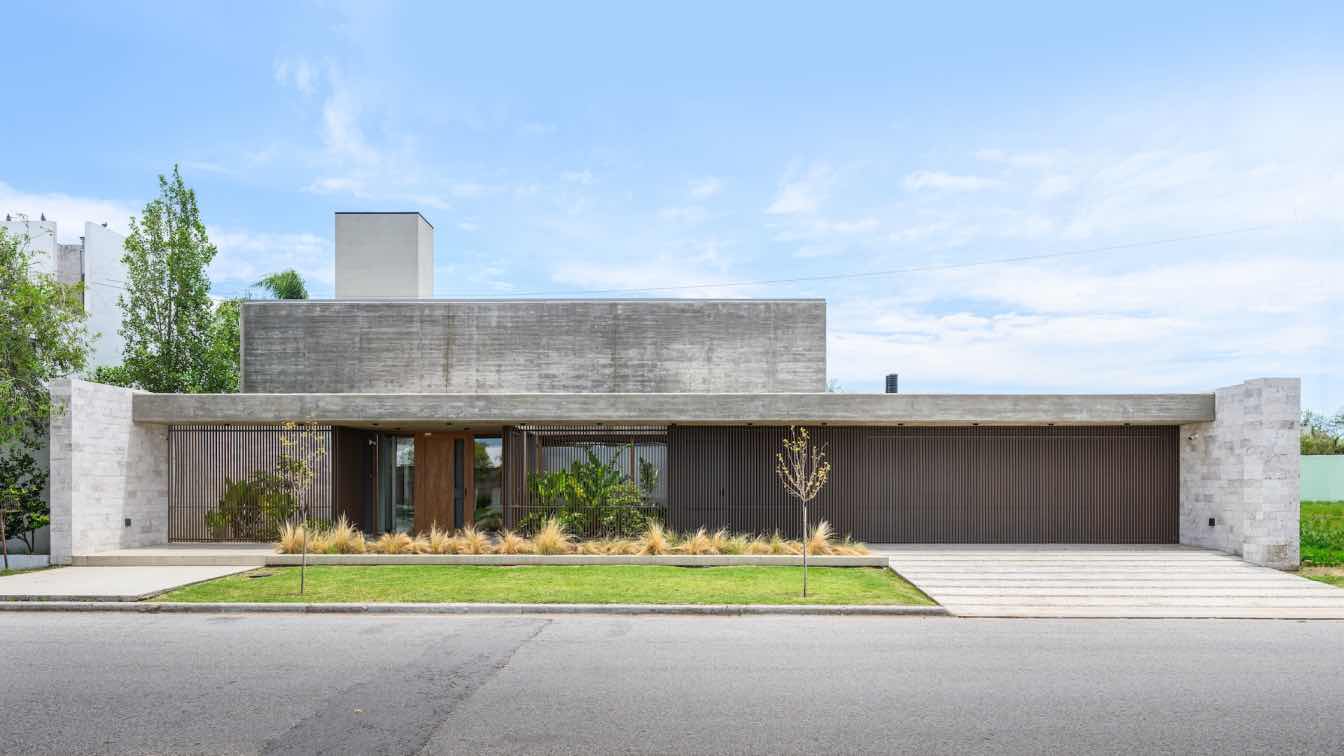Studio LAB: The villa of ‘The Little Much Farm’ straddles a remote hill side location overlooking the Sahyadri hills of Mulshi and its lake. This is home for a family and their friends to re-engage in the environs of the hills that surround Bombay. The spaces are planned as a series of potential happenings; layered, connected, scalar, with an element of discovery.
This is a site with multiple view points and extreme weather conditions. The design strategy of the roof provides shelter from both monsoon rain and the harsh sun; liberating the forms of the enclosures. The enclosures of the house are a composition of angles informed by the various draws of the site and the eccentricities of its owners. Three single slope mild steel roofs slant in distinct directions creating specific conditions; a windy but dry corner, a crack of sky above the entry, a sheltered monsoon walkway.
The mild steel dia-grid roof structures float above the various interior and exterior spaces. A ship building fabrication team built the steel roof structure on site. Exposed concrete columns built with custom detail form work, hold up the drifting roof planes at strategic nodes of the dia-grid. The locations of the columns allow for large roof overhangs to shelter the deck and considered interior spaces. Oriented on specific axes, spaces are enclosed with large scale glazing and masonry walls.

Three distinct built blocks are constructed along the slope of the terrain, keeping the number of retaining walls to a minimum. The middle block is a double height volume and is connected to the upper floor of the western block and the lower floor of the eastern block. The blocks are connected at one level to create collective social spaces. The deck is the connecting ground plane between the first floor of one house block, the ground floor of another, the garden, the pool and the entry ramp.
This construction method allowed for the creation of spaces of both purpose and whimsy.
The external masonary walls were clad with four forms of Silver grey slate. Raw slabs, rough cut, polished and mixed slats of slate were composed to emphasise the inherent qualities of the material.
The internal spaces are both playful and practical. A large timber slide connects the first floor with social space on the ground floor. The slide immediately sets the tone for the potential of fun in the house. The house is dotted with elements of bespoke design details that bring joy. Reading the words cast in the underbelly of the slabs strategically placed above the beds of the guest rooms, bring moments of delight. Cast in place sculptural terrazzo wash basins, laser etched art on the wardrobe shutters, ceramic lily pads in the deck floor, a sunset seat in the pool; curate a lively experience for a home on a farm.
























